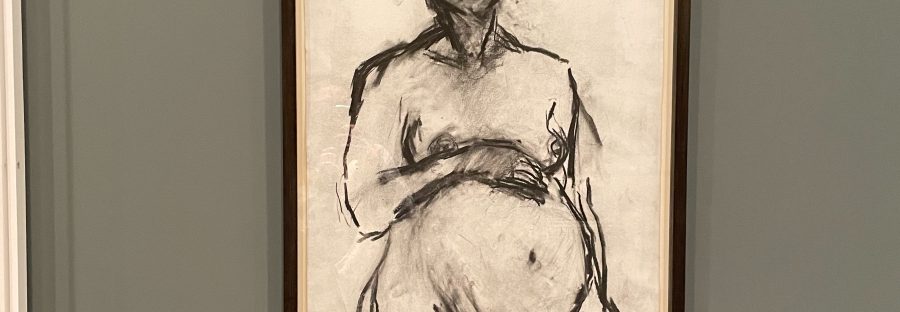Still Parents exhibition breaks the silence on the trauma of baby loss
- An exhibition aiming to tackle the struggle of baby loss is currently on at Whitworth art gallery
- The exhibition is a blend of artwork and poetry
- Support sessions are offered to families who experience child loss
An exhibition focussing on the grieving voices of parents who have experienced baby loss is being staged at the Whitworth art gallery.
The exhibition blends artwork, objects, and poetry to tell the stories of bereaved families and the grief they have suffered.
It is an offspring of the Whitworth’s award-winning Still Parents Project, with artwork created through the project on display at the exhibition.
More than 70 families so far have participated in the project, the idea of Whitworth’s producer Lucy Turner, offering support sessions to bereaved parents, using art and creativity as a gateway to openly discuss the topic of child loss.

The exhibition reflects relationship between parents and the children they have lost, with babies’ names written along the walls of the gallery and a ‘place to share’ stand which allows families to write their experiences.
Lucy founded the project in partnership with stillbirth charity Sands in 2019 after wanting to find a way of healing from her own trauma of child loss but not feeling drawn to talking therapy.
She said: “I experienced a stillbirth in 2016 and lost my daughter Jenny. I never accessed any support groups as I just didn’t feel like they were for me.
“I wanted to create something that I would have wanted in the hope it might be what others needed too”.

An estimated one in four pregnancies in the UK end in child loss and ONS statistics for 2021 show the still birth rate has risen to 4.2 per 1,000 births.
The figures reflect the number of bereaved families who could benefit from this type of therapy.
Lucy said: “We initially had twenty places and they were sold out within a day, it showed us there is a real need for this.
“Art galleries are a place of respite, so I also wanted to share the Whitworth with others because being here really helped me with my healing.
“The art finds an outlet for their grief and allows them to share if they wish to do so.”
Steph Wild, an attendee of the sessions and founder of her own bereavement charity, Beyond Bea, described the Still Parents project as a “natural” and “organic” way to talk about children who are no longer with us.
“Being able to be proactive and do something, the doing something for some people is really beneficial because it is easier than having a conversation about it,” she said.
“It enables you to have another tangible memory because you don’t really get any more of those. Sometimes it might bring out thoughts that are really sad, but you are putting it into something.”
Steph previously worked as a bereavement midwife before she experienced the loss of her own baby, Bea, in 2018. Her charity provides free training to educate midwives and students on baby loss, as well as bereavement care
Steph described the guilt parents often feel when they eventually learn to cope with their grief differently and said Still Parents enables them to assign time in their life for the child.

She said: “It gives them that hour to set aside, to sit and focus on their baby that is not here. That is their opportunity to say this is my time for them right now.”
Still Birth charity Sands provides support services to bereaved families and were a key part to the success of the programme, bringing knowledge to the Whitworth team on how to communicate with the bereaved families involved.
Co-chairs at Manchester sands, Jo Richler and Paul Kleiman, said: “When someone experiences the loss of their baby they can feel very isolated and other people may not know how to react or offer support.
“The Still Parents exhibition and the partnership with Sands has shown not only that art can play an important role in opening up much needed conversations about baby loss, but also that anyone affected can know they are not alone.
“By displaying their work in a public space the exhibition is also making a vital difference in breaking the silence around all forms of pregnancy loss and baby death.”


